Natural Habitats
The Environmental Study Area serves as a natural oasis within a highly urbanized environment. Its varied habitats offer a safe haven and essential survival resources to a wonderful variety of plant and animal life.
Each of these habitats is managed by Center staff to maintain optimal native habitat health. This includes ongoing invasive plant removal.
Early to Mid-Successional Deciduous Forest
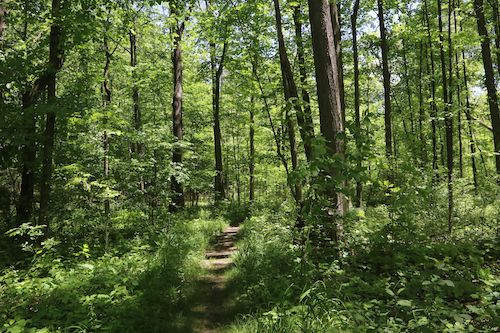
These young forests are situated where large apple orchards once stood as part of the Henry Ford estate. The management of these orchards was discontinued in the 1950s, which enabled a host of sun-loving, fast-growing plants to move in and become established. Deciduous trees and shrubby undergrowth in the forest openings now offer an assortment of habitat niche options for wildlife.
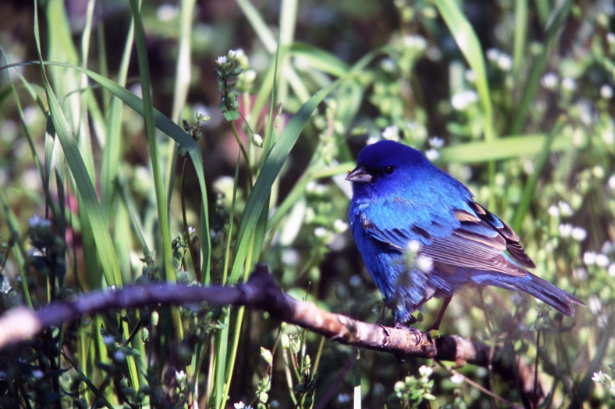
A characteristic bird species of this habitat is the Indigo Bunting, which comes north from its wintering grounds in Mexico and Central America to breed in our region. In spring and early summer, listen and look for the male buntings singing their territorial song from the tops of tall trees, while the females are likely to be seen near the ground amid the dense shrubbery, where they place their nests.
Scattered tall trees, such as the Black Walnut, provide nuts for Eastern Chipmunks and squirrels including the Southern Flying Squirrel. Sunlit openings enable dense patches of tall flowering plants such as Wingstem (Verbesina alternifolia) and White Snakeroot (Ageratina altissima) to thrive here. These in turn support a host of native pollinators such as bumblebees.
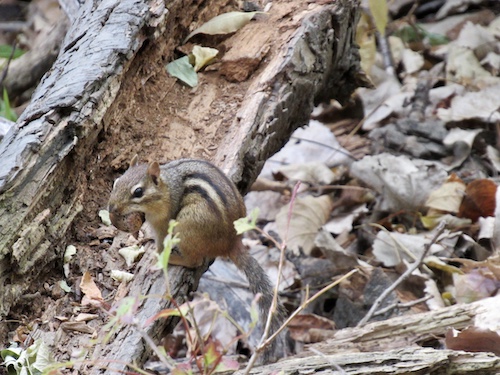
Late-Successional Deciduous Forest
This type of forest, which takes hundreds of years to develop, once covered much of what is now Dearborn. Consisting of mostly Black Maples (Acer nigrum) and some scattered American Beech (Fagus grandifolia), it represents the pinnacle of forest development found in our region. Forest undergrowth is sparse due to the dense upper canopy that allows for very little sunlight penetration. This creates conditions that enable more “shade tolerant” American beeches and Black Maples to grow underneath the taller ones. As the large trees die off, the younger ones grow up to replace them. This brings about a relatively stable forest type for extended periods.
The occasional Pileated Woodpecker will show up here to search old, decaying trees for Carpenter Ants, a favorite food item for them. An assortment of native spring wildflowers, such as the Cut-leaved Toothwort (Cardamine concatenata), also grow here.
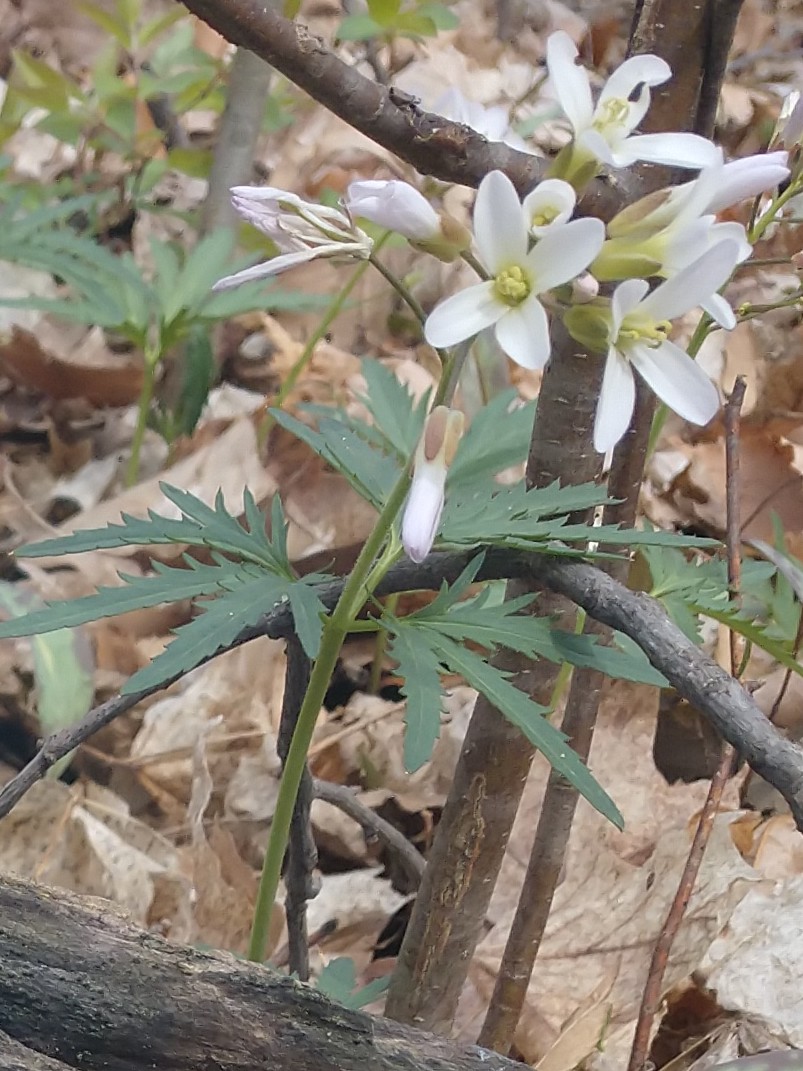
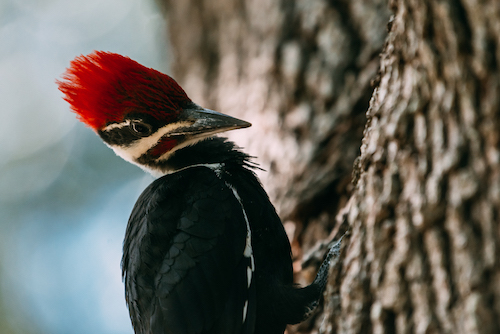
Among the denizens of this forest is the Red-backed Salamander, which finds the rich topsoil and many fallen logs perfect for its survival needs.


Old Field
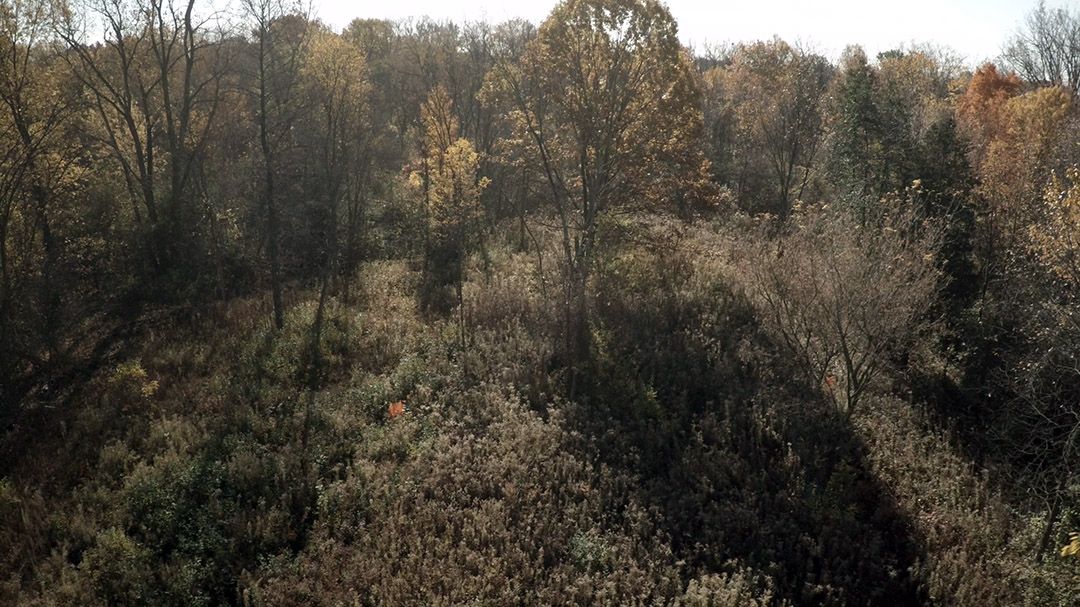 This habitat represents a very early stage of plant colonization. Until 2017, annual mowing around the scattered tall trees kept a space clear for UM-Dearborn classes to study plant succession. After the mowing was discontinued, a variety of plants that require full sunlight quickly became established, creating a dense and shrubby habitat.
This habitat represents a very early stage of plant colonization. Until 2017, annual mowing around the scattered tall trees kept a space clear for UM-Dearborn classes to study plant succession. After the mowing was discontinued, a variety of plants that require full sunlight quickly became established, creating a dense and shrubby habitat.
Characteristic flora found here include the thorny Climbing Rose (Rosa setigera), thickets of Arrowwood Viburnum (Viburnum dentatum) and an assortment of wildflowers that characteristically bloom from mid-summer through the fall, such as the Ironweed (Vernonia sp.), a favorite nectar source for many butterfly species as well as clearwing moths (Hemaris sp.). The Gray Catbird finds this habitat type ideal for nesting.

Rouge River Floodplain Forest
One of the few remaining forests of this type along the banks of the Rouge River, this flat, lower-lying habitat experiences regular overflow from the river and contains several vernal ponds of various sizes. The diverse plant community includes flood-adapted trees such as the American Sycamore, of which several large specimens can be found. It also harbors the oldest trees in the Environmental Study Area including a few Bur Oaks which are estimated to be 250-300 years old.
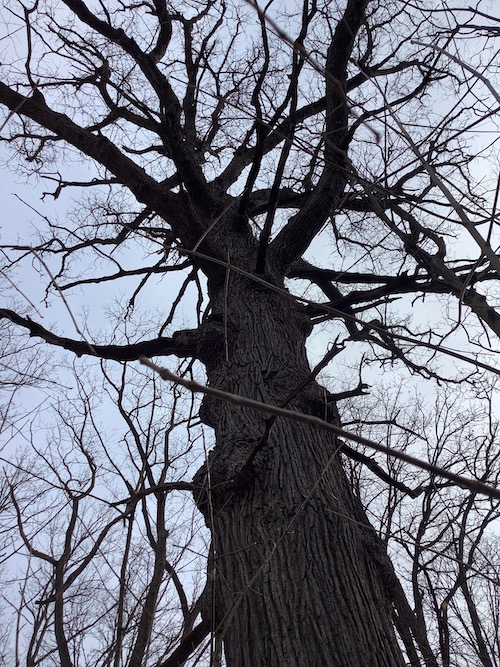
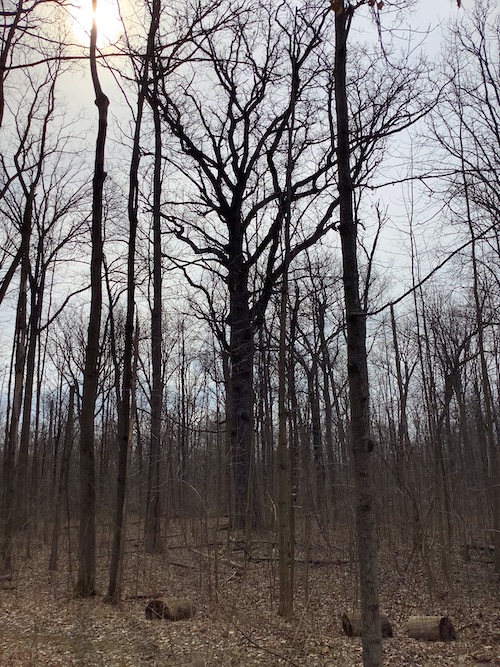
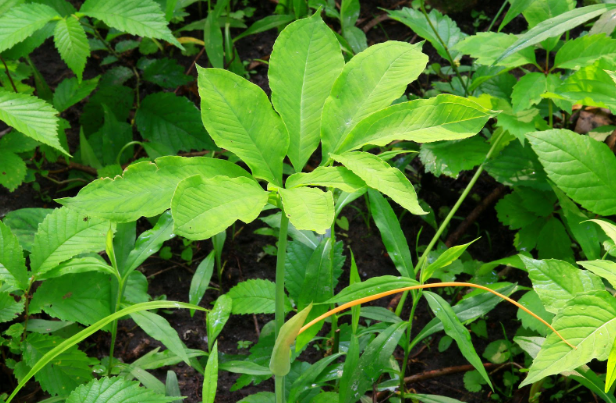
This habitat also supports a population of Green Dragon (Arisaema dracontium), a highly unique wildlife species that has a long narrow flower spike (spadix) which resembles a lizard’s tongue.
Marsh
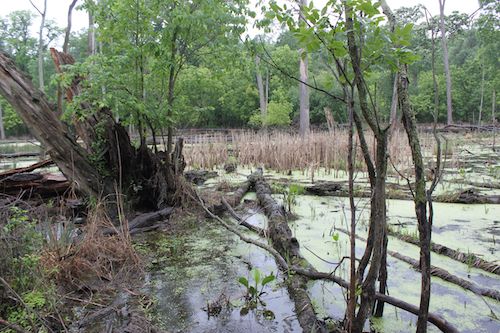 One of very few remaining floodplain marshes along the Rouge River, this wetland has gone through various ecological changes over the last 100 years. Primarily open, marshy wetland in the first half of the 20th Century, by the 1960s it had become a wooded swamp, which it remained until the last 1990s when all the ash trees in it were killed off by the invasive Emerald Ash Borer. Since then, the dramatic increase in sun exposure has changed the plant community back to marsh. A large and dense mass of cattails now dominates the space.
One of very few remaining floodplain marshes along the Rouge River, this wetland has gone through various ecological changes over the last 100 years. Primarily open, marshy wetland in the first half of the 20th Century, by the 1960s it had become a wooded swamp, which it remained until the last 1990s when all the ash trees in it were killed off by the invasive Emerald Ash Borer. Since then, the dramatic increase in sun exposure has changed the plant community back to marsh. A large and dense mass of cattails now dominates the space.
Pools of shallow water provide an ideal breeding medium for the Western Chorus Frog (Pseudacris triseriata). Wood Ducks can also be found here fairly regularly during the nesting season. Dead standing trees provide ideal nesting opportunities for woodpeckers and other cavity-nesting species.



Restored Native Forests of the Jens Jensen Landscape
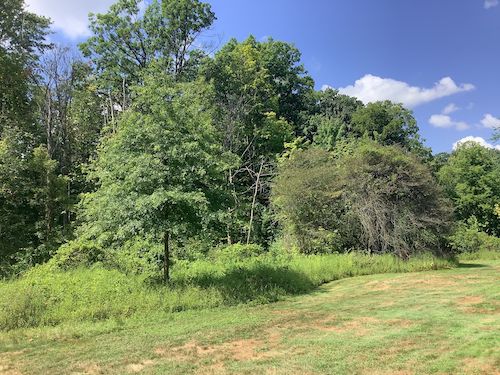 These planted forests were established starting in 1914, when Henry Ford hired the renowned landscape architect Jens Jensen to establish a native forest on his estate grounds. The landscape chosen for Jensen’s forest restoration was completely devoid of existing trees; a blank and barren planting slate. Thousands of trees and shrubs of different species were planted. These forests are now part of a National Historic Landmark which highlights the entire landscape, as part of the forest estate of Henry and Clara Ford.
These planted forests were established starting in 1914, when Henry Ford hired the renowned landscape architect Jens Jensen to establish a native forest on his estate grounds. The landscape chosen for Jensen’s forest restoration was completely devoid of existing trees; a blank and barren planting slate. Thousands of trees and shrubs of different species were planted. These forests are now part of a National Historic Landmark which highlights the entire landscape, as part of the forest estate of Henry and Clara Ford.
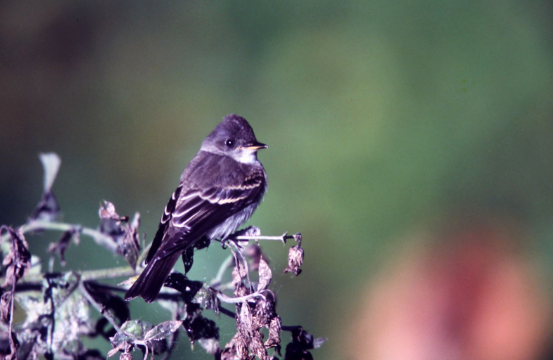
Tall native oaks, maples, and other trees in this forest support a high level of insect biomass, which provides food for hungry bird nestlings as well as migration stopover fuel for a host of transient birds. Bird species commonly seen and heard here in spring and early summer include the Scarlet Tanager and Eastern Wood Pewee.
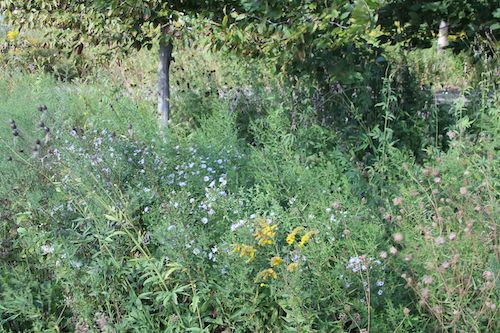 This forest also contains a high quality assemblage of native spring wildflowers such as Large-flowered Trillium and Wild Ginger.
This forest also contains a high quality assemblage of native spring wildflowers such as Large-flowered Trillium and Wild Ginger.
Fair Lane Lake
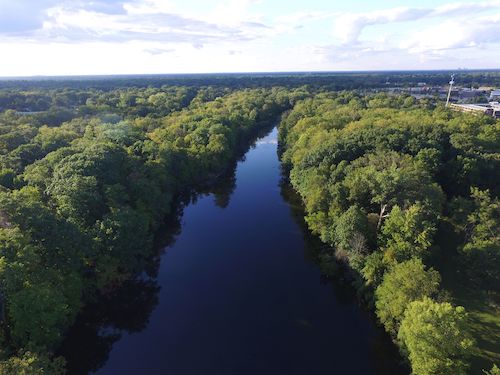 Fair Lane Lake is of human construction. The design schematic for the lake was completed in 1915 as part of the overall landscape plan Jens Jensen developed for Henry and Clara Ford’s estate. The lake increases in depth from the north end to the south end. The deepest area shown in Jensen’s plan is a 12 foot “deep-water wintering area for fish.”
Fair Lane Lake is of human construction. The design schematic for the lake was completed in 1915 as part of the overall landscape plan Jens Jensen developed for Henry and Clara Ford’s estate. The lake increases in depth from the north end to the south end. The deepest area shown in Jensen’s plan is a 12 foot “deep-water wintering area for fish.”
Jensen’s plan for the lake called for planting “water hyacinth [probably the sweet-scented water lily which currently is found in the lake], spike rush, cat-tail, arrowhead, native grasses, and wild rice to provide food and cover for waterfowl.
Today, the lake continues to provide excellent habitat for an assortment of birdlife including several species of herons and the Belted Kingfisher. A substantial population of turtles is represented by several species including the Midland Painted Turtle (Chrysemeys picta marginata) which can be seen basking on floating logs and branches during the warm months. Bullfrogs are also found here and can be regularly seen as well as heard during their late spring and summer breeding period. Over 10 species of dragonfly can be seen laying their eggs in the lake from spring through fall.



